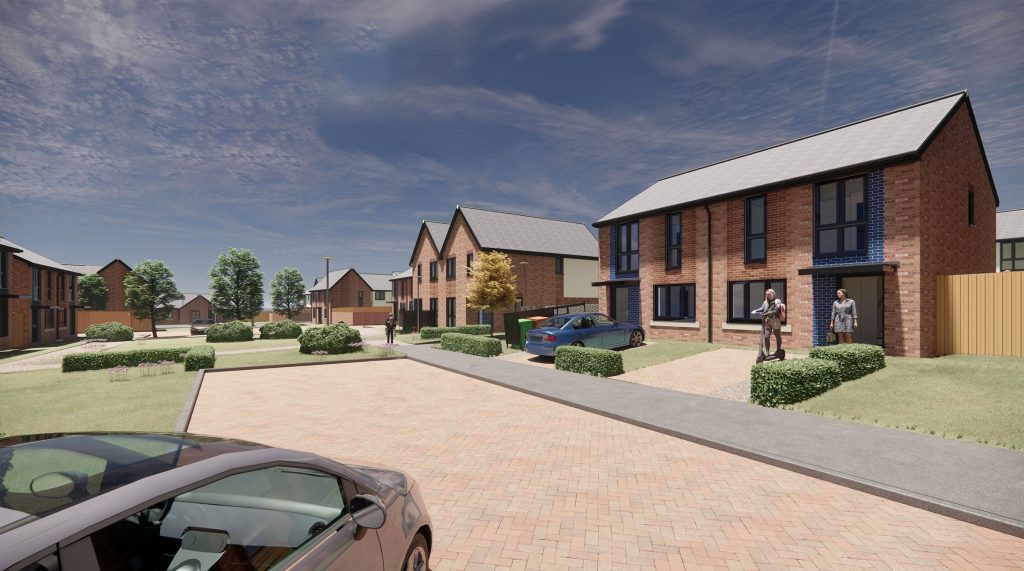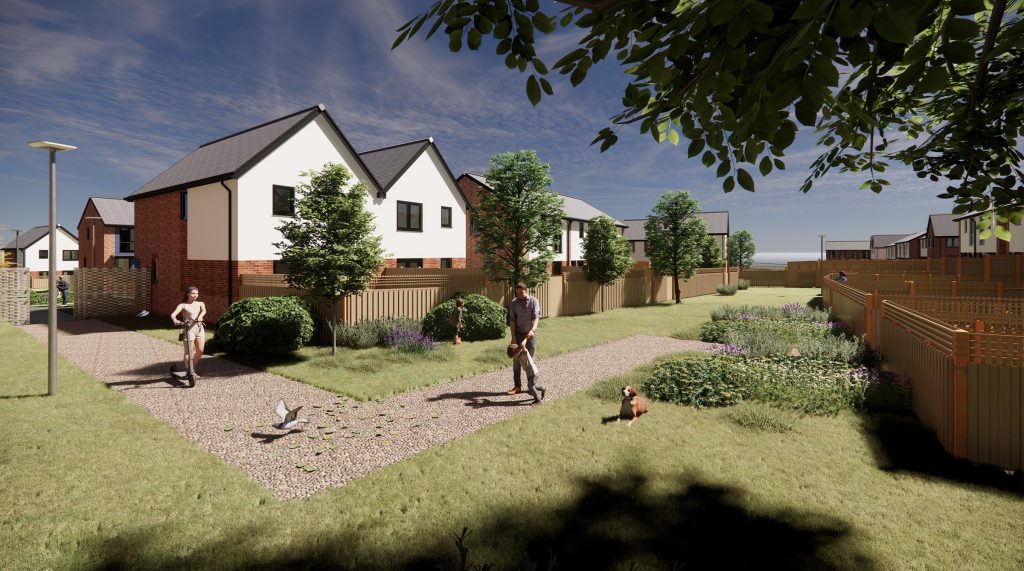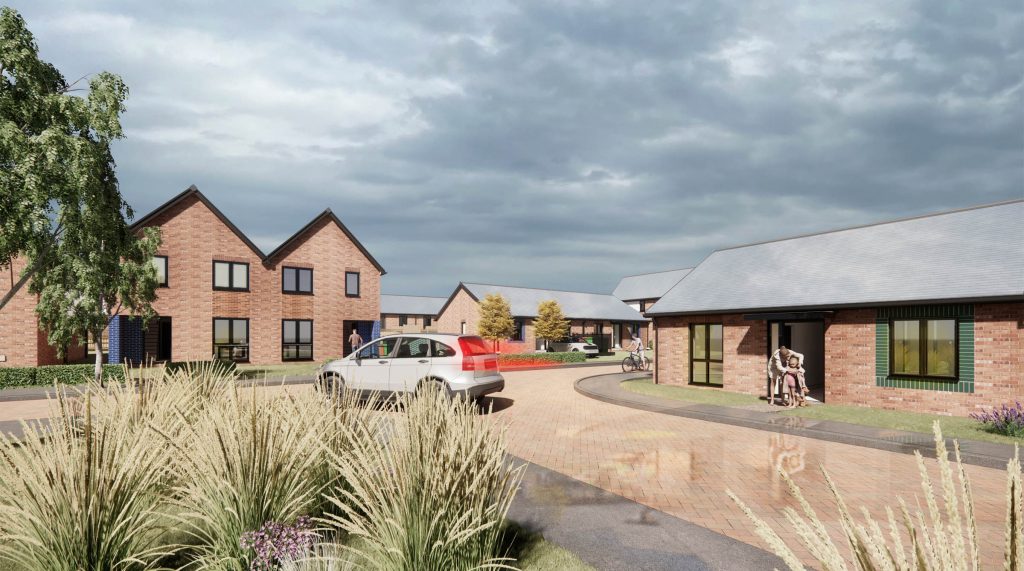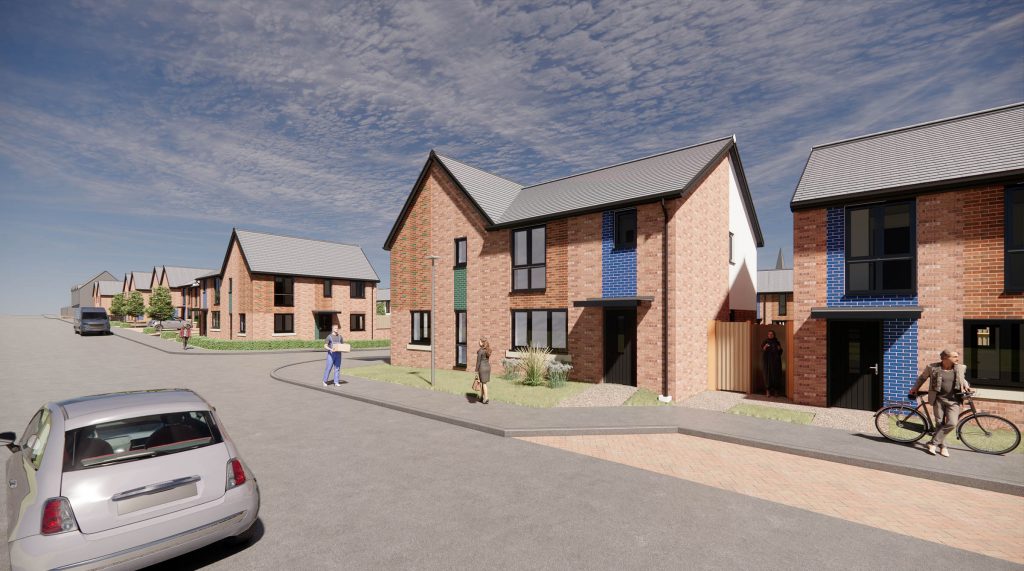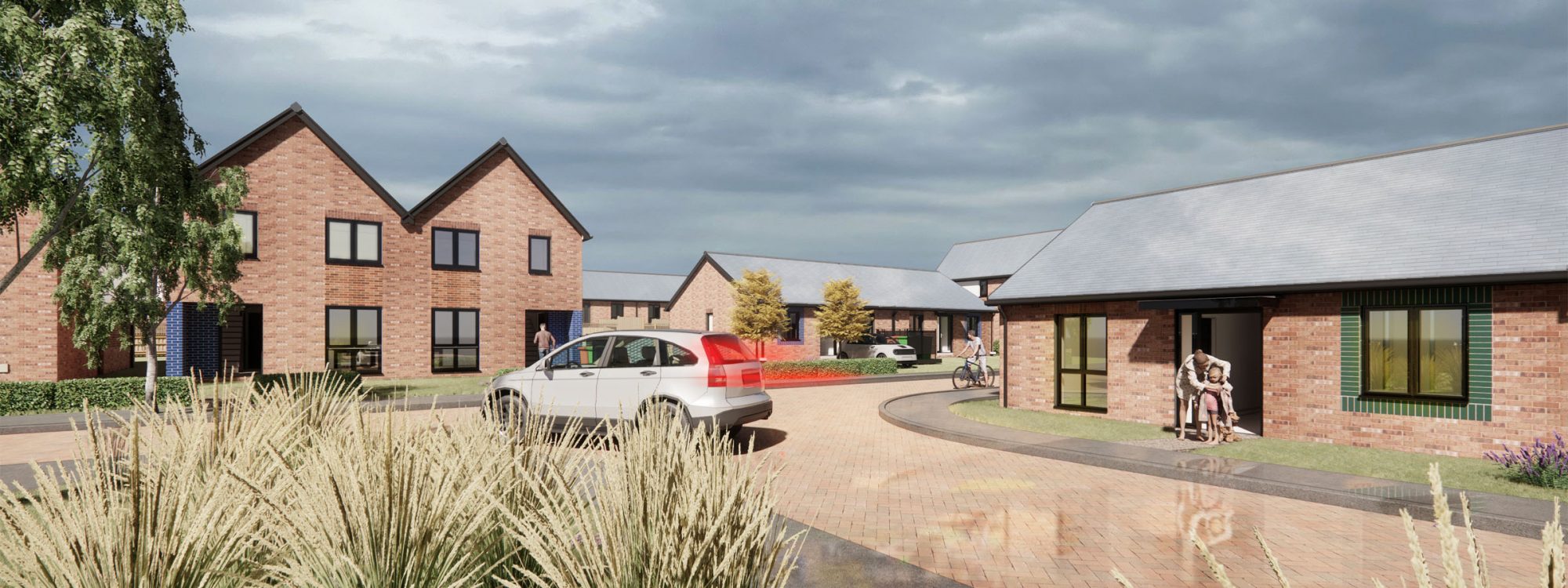
Amberley and Harrogate, Sunderland
The development at Amberley and Harrogate Street is for the regeneration of a previously cleared residential site to create vibrant new affordable homes for people in Sunderland. Previously housing traditional terraced properties, the site has been vacant for many years and presented various challenging constraints relating to existing routes and services crossing the site, alongside the opportunities offered by its sustainable location with good local amenities.
Our proposed design creates 96 new affordable dwellings on behalf of Thirteen Housing in a mix of bungalows, two and three storey properties, all arranged to clearly integrate with the existing surrounding properties and key routes. To address the constraints imposed by the retained road network, JDDK opted to utilise the grid form of the existing roads but change their character, creating shared surface cul-de-sacs along the same alignment with connecting green spaces which promote pedestrian connectivity. Shared semi-private resident gardens have been introduced along the line of the former back lanes, adding an additional layer of useable open space to encourage resident interaction but maintain privacy and security. This is in addition to private external spaces connected to each property which form a buffer to the shared gardens beyond.
Initially intended as a modular housing scheme, the scheme instead developed to utilise timber frame construction which offered more flexibility to address the changing levels across the site, and allow a more integrated mix of dwelling scales. The site layout creates a continuation of the street edge along Salem Street to the west, with feature corner units marking the route into Mowbray Road and framing the view of St Ignatius’ Church beyond. The properties throughout are orientated to face towards the road to generate positive active frontages and mimic the block form of the surrounding terraces to positively integrate the development into the surroundings.
A distinctive elevation style was developed to give a unique and vibrant character to the site, featuring glazed coloured bricks inspired by the interior of St Ignatius’ Church and reflect the green and blue hues prominent to Sunderland’s glass making heritage.
All of the dwellings are proposed to give a high thermal performance and feature energy-saving measures such as solar PV generation. The scheme is intended to start on site in early 2025.
